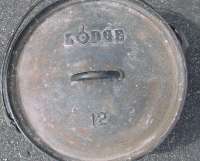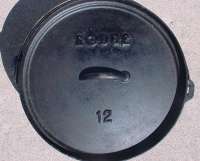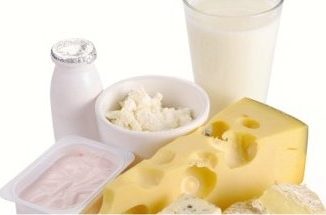Seasoning Your Dutch Oven
The Dutch Oven Dude has some great advice on using your dutch oven.
Seasoning a dutch oven does two things:
- Prevents rust and corrosion
- Creates a non-stick cooking surface for easier clean up
 Without a good seasoning coat, your food won’t taste as good as it could, your dutch oven will rust, and cleaning up after cooking will be more difficult.
Without a good seasoning coat, your food won’t taste as good as it could, your dutch oven will rust, and cleaning up after cooking will be more difficult.
So, are you convinced? Good!
Seasoning is a pretty simple process, but does take an hour or more. It is very important that you season your brand new dutch oven or one you have just acquired.
The initial seasoning will remove any undesirable contaminants and get your oven ready for that first meal. After the initial seasoning, every time you use the dutch oven you will be strengthening the coating and improving the look of your cookware.
By the way, aluminum dutch ovens benefit from seasoning even though they don’t rust like iron. Aluminum does oxidize and the seasoning layer will prevent that. Seasoning also makes it easier to clean up due to the non-stick surface.
 Initial Seasoning
Initial Seasoning
The first time you season your dutch oven, you are removing a protective waxy coating applied at the factory to prevent rust in shipment as well as starting the non-stick coating process. Some cookware now comes pre-seasoned from the factory so you may not need to perform this initial seasoning.
If you have an outdoor barbeque grill, see if your dutch oven will fit inside with the grill cover closed. It is much better to season your dutch oven outside rather than in your kitchen oven, but you can do it inside. You’ll want to do it on a day when you can open the windows because there will be smoke created.
This is how to season a dutch oven:
- Heat your grill or oven to 400 degrees.
- This will be only time you will use soap on your dutch oven. Wash your cookware in soapy hot water. Use a scouring pad or steel wool to scrub away all coatings down to the metal. Remember, after this you don’t use soap to clean up. (There are other ways to strip a dutch oven – electrolysis bath, vinegar, oven cleaner)
- Thoroughly dry the dutch oven and lid with a cotton towel or paper towels. Place it in the grill for a minute or two to really dry it and heat it up a bit. Use an oven mitt to remove the dutch oven from the grill and let it cool just enough so you can touch it.
- Rub vegetable shortening all over the inside and outside of your dutch oven and its lid. Use plain Crisco shortening, or canola oil, or flax oil – do not use butter or flavored shortening. Using a paper towel or cotton rag or your fingers, rub the shortening into all the pockmarks, holes, and dimples in the metal surface.
- Wipe off all the oil with paper towels or cotton rag. Wipe it again until it looks like there’s no oil left.
- Place the dutch oven upside down in the grill or kitchen oven and close the door or grill lid.
- Place the lid in the grill also so it bakes along with the dutch oven.
- Bake the dutch oven for 45 to 60 minutes. Open windows and temporarily disconnect your smoke alarm while doing this because the oil will smoke.
- Turn off the grill and leave the dutch oven inside to cool for 30 minutes.
- Using an oven mitt, remove the cookware from the grill.
- Allow the cookware to cool until you can pick it up.
- Repeat steps 4 through 11 until you are happy with the color and sheen. It will probably take 3 to 6 cycles.
Periodic Seasoning
As you use your dutch oven, the grease, oil, and fat from the food you cook will continue to season the cookware. Some acidic foods such as beans and tomatoes can remove some of the coating. So, frying bacon, deep-frying fish, making doughnuts, or cooking fatty foods will improve the protective layer while acidic foods will harm it.
Once seasoned, your dutch oven will most likely not need to be seasoned again as long as you use it often and clean it correctly. It never hurts to reseason it and some folks like to do that at the start of a cooking season.
It also may be necessary to reseason if food seems to be sticking too much or your cookware has been abused or stored incorrectly. If there is rust or the oven just doesn’t look well coated, it’s a good idea to season it again.
Periodic Seasoning is just like the Initial Seasoning except that you don’t wash with soapy water. If there is rust present then you may want to strip down everything and do a complete Initial Seasoning. Otherwise, clean your dutch oven normally and follow the steps above except for using soap.
The finish on your dutch oven should be dark brown or black, the darker the better. It should be glossy, but not sticky. If it is sticky, you left too much oil on and you’ll need to heat it more. Over time, with proper cleaning, this glossy coating will become stronger. You should notice that foods are easy to remove and clean up is simple.
Now you know how to season a dutch oven!






